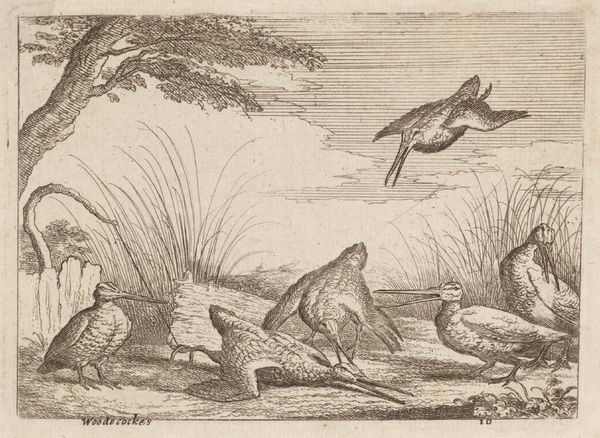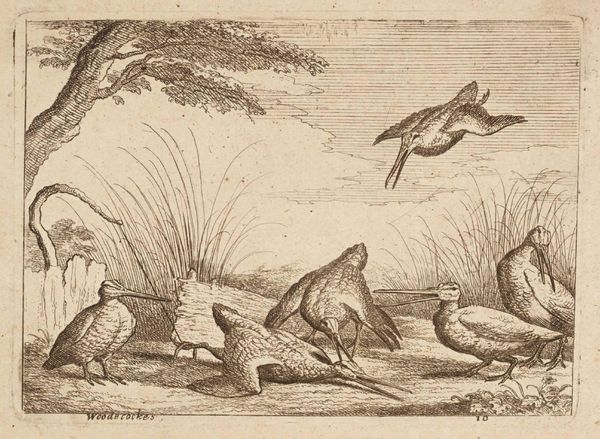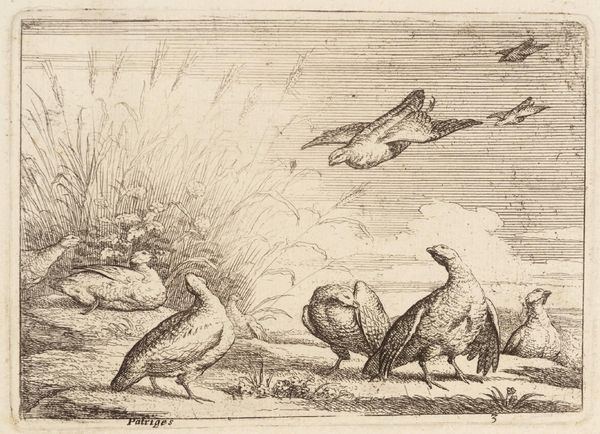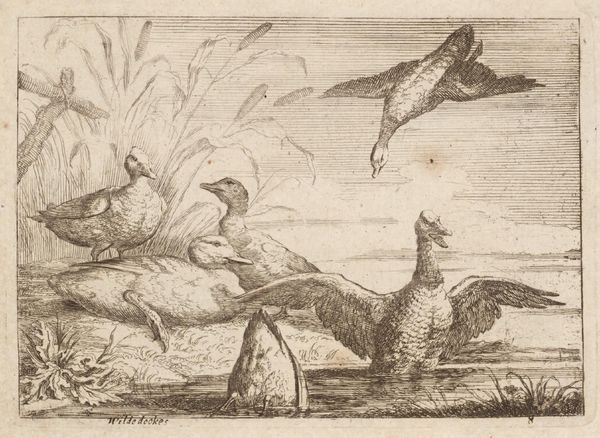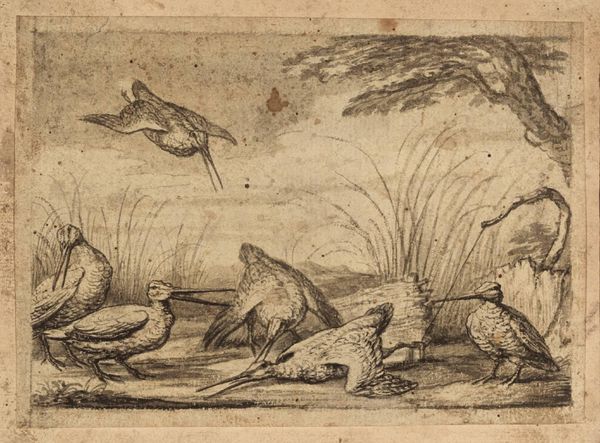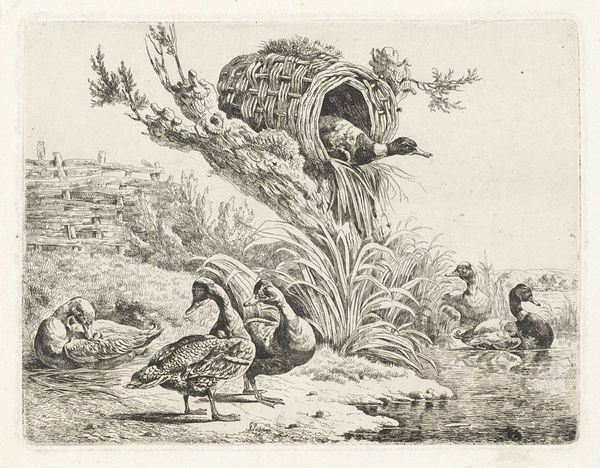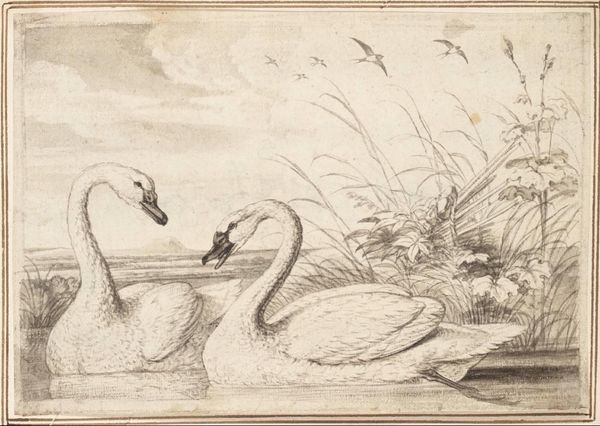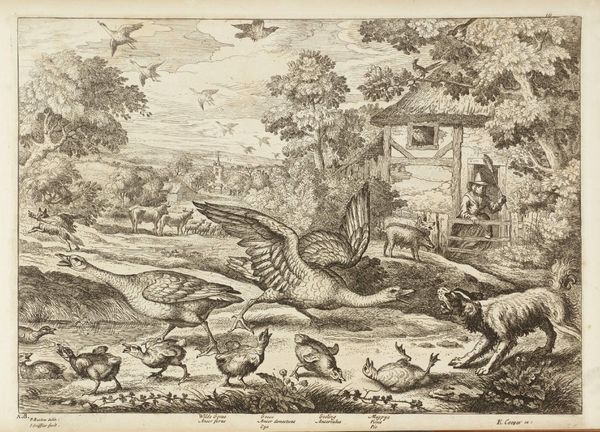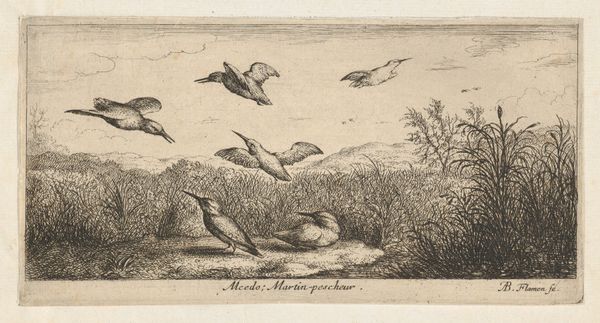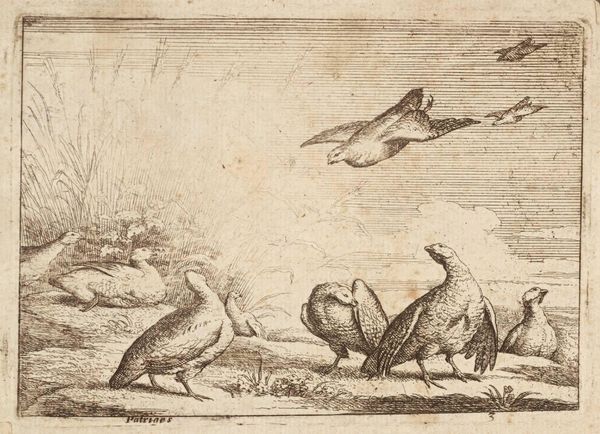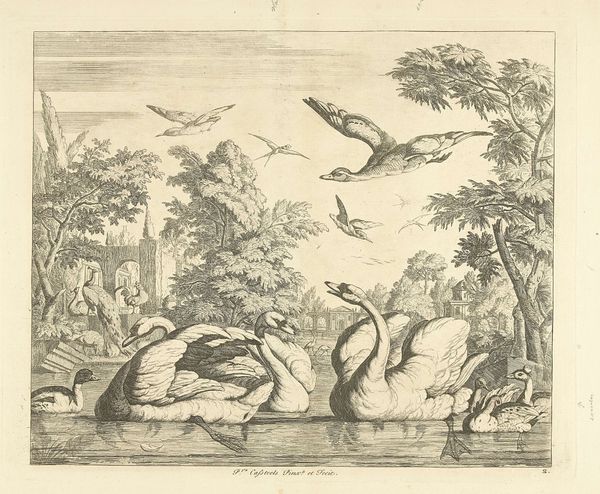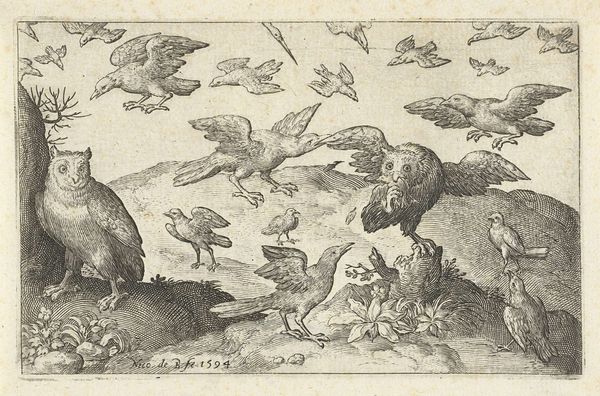
Dimensions: image: 91 x 126 mm
Copyright: CC-BY-NC-ND 4.0 DEED, Photo: Tate
Curator: Francis Barlow’s etching, “Woodecockes,” presents a seemingly simple scene of birds in their habitat. It's currently held in the Tate Collections. Editor: The first thing that strikes me is the texture—the way the etching captures the varied surfaces of the feathers, the rough ground, even the water's surface with these precise lines. Curator: Barlow was renowned for his detailed studies of animals. This piece likely served both artistic and instructional purposes. Consider the role of ornithology during the 17th century, and how such depictions supported emerging scientific classifications. Editor: Right, I'm also thinking about the socio-economic aspects; who would have commissioned or purchased this? The land-owning gentry, maybe, those invested in both the natural world and the leisure of hunting? It speaks to power structures. Curator: Indeed, and perhaps we should think about the means of production. How the copperplate etching itself contributes to the commodification and dissemination of nature. The very act of producing these images reflects early capitalist impulses. Editor: Ultimately, even in this small image, we can see the layers of human relationships with the natural world, the tensions, the power dynamics, and the emerging sciences. Curator: A lot of insights from such a tiny plate of metal.
